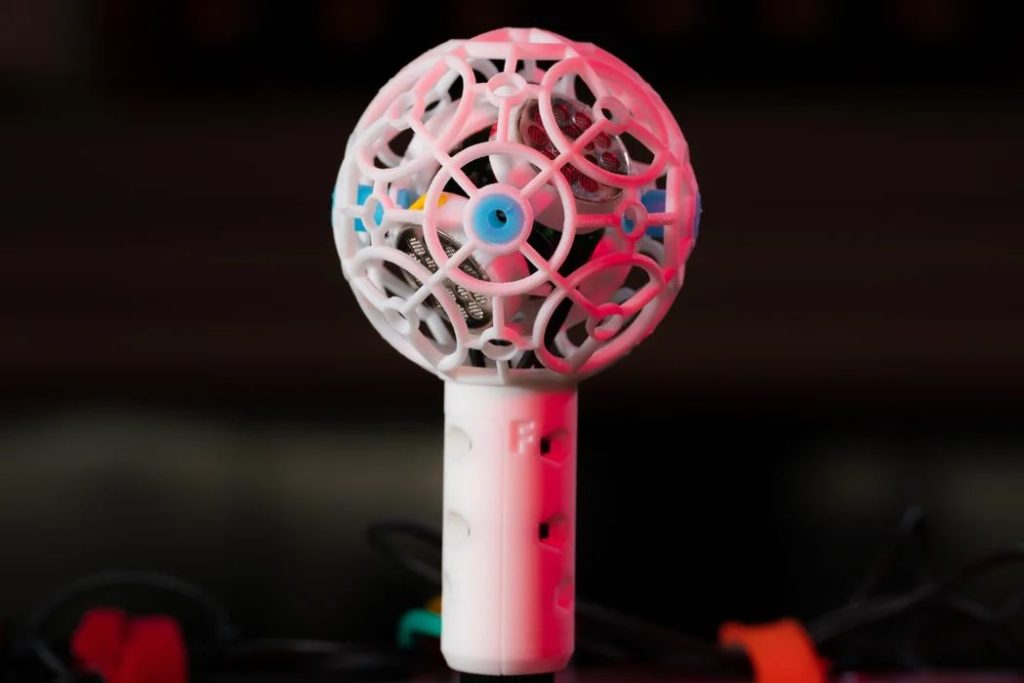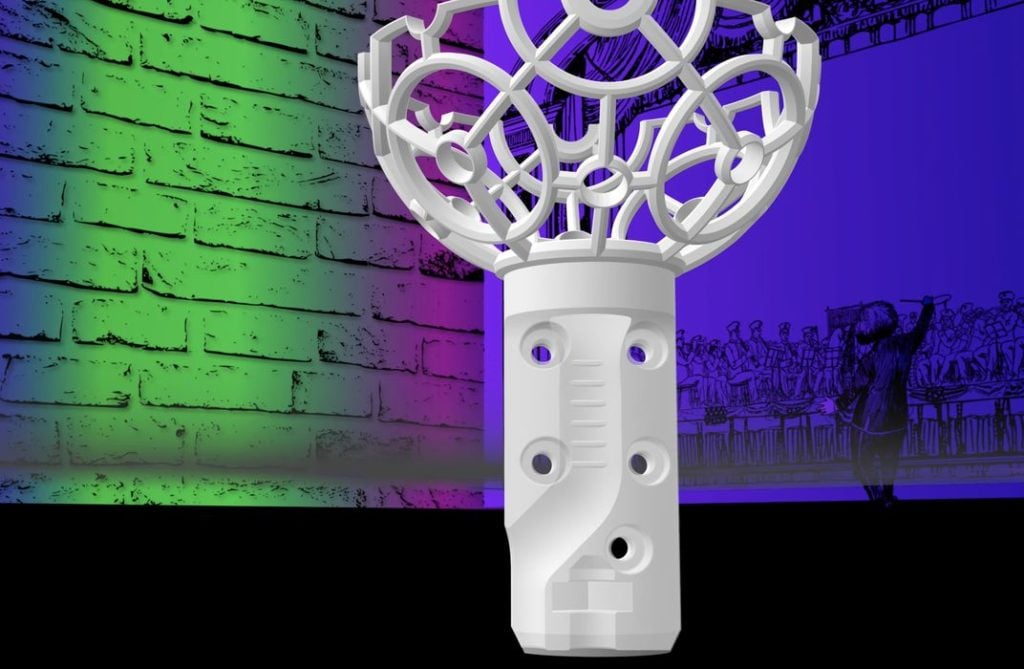
This week’s selection is the Ambi-Alice, a First Order Ambisonic DIY Microphone by Instructables contributor DJJones.
This DIY project involves 3D printing a microphone, which at first might sound like a rather simple project. But this is nothing like that, and the result is a highly functional ambisonic microphone.
Wait, what’s an “ambisonic microphone”?
According to Wikipedia, “ambisonics” is a surround sound format that includes a full spherical sound field, rather than the front/back/side style of surround sound we are most familiar with. In other words, an ambisonic field includes not only the usual surround sound, but also above and below.
How is this done, exactly? It turns out the key is to use four separate microphones that are carefully arranged to point in the required directions. But the directions are not, as you might guess, the six fundamental directions.
That’s where 3D printing comes in. This project involves four key elements:
- A 3D printed microphone holder
- A case to hold the microphones, carry wiring and provide a mount point
- Electronics
- Software
Hold on, why would you need software? Isn’t a microphone just a wire with a connector? Not in this case, because you have to not only collect the audio information from each axis, you also have to combine the four streams into the required ambisonic file format.
This is because the stored sounds have different capabilities. Wikipedia explains:
“Unlike other multichannel surround formats, its transmission channels do not carry speaker signals. Instead, they contain a speaker-independent representation of a sound field called B-format, which is then decoded to the listener’s speaker setup. This extra step allows the producer to think in terms of source directions rather than loudspeaker positions, and offers the listener a considerable degree of flexibility as to the layout and number of speakers used for playback.”
This video shows the entire process, of which almost half is dealing with the file conversions and operation:
Side note: the audio quality in this video is truly outstanding.
The 3D printable portions of the project are not simple. They are well-designed parts that offer a variety of functions.

The mount, shown here, is able to connect with standard attachments and has cuts to allow the cabling to easily travel where it needs to go.
Two forms are provided in .STL format: a standard version for a conventional mic setup, and a GoPro version where you can mount the ambisonic microphone with your GoPro camera.
Should you undertake this project, you’ll be left with a near-professional, fully functional ambisonic microphone setup that you can use in audio and video projects.
Via Instructables
